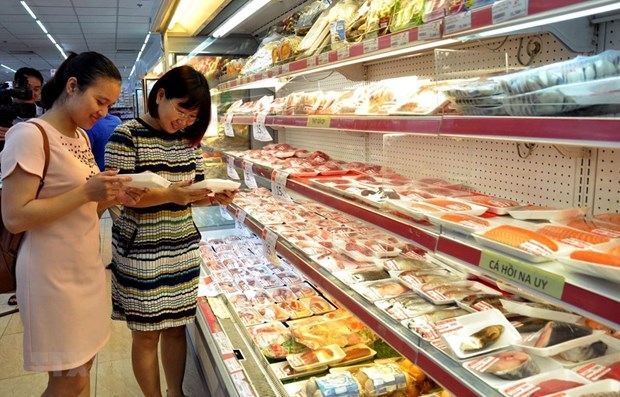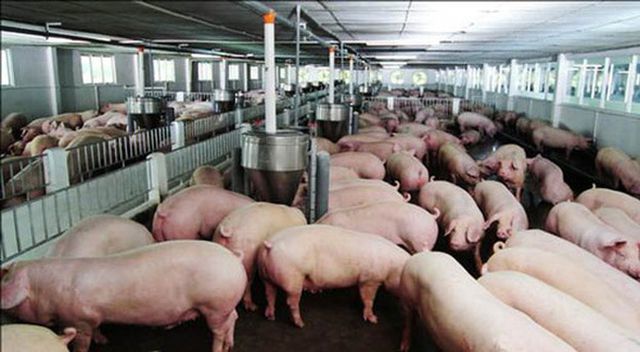 |
|
Since October, due to the effect of African swine fever, local pork prices have increased by more than 20 per cent from the same period last year.
|
Ignoring pork, 56 -year-old Nguyen Thi Ha instead selects a pack of chicken at a Lotte Mart in Ha Noi.
Since October, due to African swine flu, local pork prices have increased by more than 20 per cent from last year, and for prime cuts the cost is even higher. For example, good quality pork belly now costs nearly double at VND150,000-200,000.
As the price of pork increases, so do local favourites like banh my pho Hue, which is a baguette loaded with pork pate that has gone up to VND30,000 from VND25,000.
Deputy Minister of Industry and Trade, Do Thang Hai forecast a shortage of more than 200,000 tonnes of pork yesterday, so Hai’s ministry is planning to allow more imports to meet local demand.
At the same time, the Ministry of Finance (MoF) has proposed reducing the import tax on pork from 25 per cent to 22 per cent. According to the MoF, the most-favoured nation (MFN) tariff will bring more pork from the US, Brazil and Poland to the table at lower prices. A representative from the MoF said: “Consumers will be happy with the tax breaks.”
With a population of nearly 100 million, Viet Nam is one of the world's top pork consumers and second in Asia, only after China. According to the Ministry of Agriculture and Rural Development (MARD), 70 per cent of all meat consumed in the country was pork.
According to the Department of Livestock Production, in the first nine months Viet Nam imported 14,824 tonnes of pork, which was higher than the total imported in 2018.
While no official prices have been set for imported meat by Vietnamese authorities, prices of imported pork products on offer in supermarkets in Ha Noi are mostly double that of local pork.
Most imported pork is frozen and comes from the US, Canada, Spain, Germany and Poland.
Consumer Nguyen Thi Ha never uses imported pork when she cooks but said she was happy with the tax cut if it made prices cheaper.
Ha, who cooks lunch and dinner for four people every day, told Viet Nam News: “Most of our favourite meals contain pork. Higher prices have forced me to lower the amount of pork I use and my husband is not happy.”
“When pork prices increased, they also put up prices of other things in the market, saying it was because of pork prices. It is ridiculous but we had no choice but to accept it,” she said.
Tran Thi Nga, the owner of a bun cha (vermicelli with grilled pork and fresh herbs) restaurant on Doi Can Street in the capital told Viet Nam News: “I've lost some regular customers after putting the price up VND10,000 per serving but I have no other choice. The pork prices keep rising.”
Nga said if imported pork was cheaper than local produce, she would take that option. “Wherever the pork comes from, I can turn it into delicious bun cha,” she added.
However, Nguyen Kim Doan, vice chairman of the Dong Nai Livestock Association, is not happy at all.
The southeastern province of Dong Nai is the country’s largest pork producer with a herd of 1.4 million pigs. The association was worried the tax break for imported pork could put local pig farmers at risk, he said. — VNS

Finance ministry proposes cutting import taxes on chicken, pork
The Ministry of Finance has recently sent Dispatch No.14813/BTC-CST to competent ministries and sectors, suggesting cutting import on chicken and pork products.

Official warns of illegal pork imports from Cambodia, Thailand
Deputy Minister of Industry and Trade Do Thang Hai has warned localities of illegal pig and pork imports from Cambodia and Thailand.
 With a population of nearly 100 million, Viet Nam is one of the world's top pork consumers and second in Asia, only after China.
With a population of nearly 100 million, Viet Nam is one of the world's top pork consumers and second in Asia, only after China.